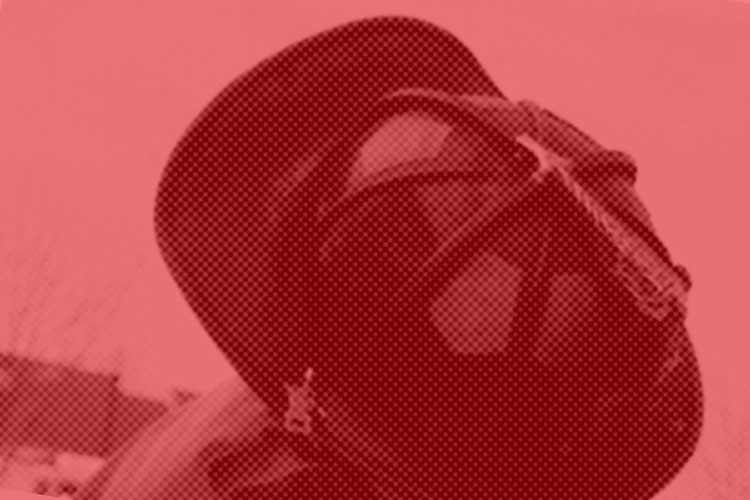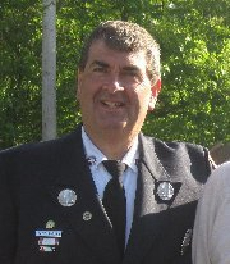

By D. Brady Rogers
In a firefighter fatality investigation from December 2015, recommendations by the NIOSH Fire Fighter Investigation and Prevention Program included:
- Fire departments should ensure that all fire fighters are trained in and recognize the importance of situational awareness.
- Fire departments should ensure that Mayday training programs are developed and implemented so that fire fighters are adequately prepared to call a Mayday.
In reviewing 32 investigations from 2010-2015, of structure fires with firefighter fatalities, excluding cardiac events, we find that 12 times NIOSH recommended that Mayday policies and/or training programs be developed—that’s 37 percent of the time.
RELATED: Don’t Bet Your Life: The Sin of Complacency | Mayday Monday: SCBA Confidence Drill | Report: Mount Marion (NY) Firefighter Suffered Respiratory Failure
In a study of all firefighter fatalities from 2010 to 2015, again excluding cardiac events, in 31 out of 75 incidents (or 41 percent of the time), some lack of situational awareness (beginning with lack of size-up/risk analysis) was noted as either a contributing factor in the fatality or training in it was a recommendation.
According to NIOSH, the problems is that the fire service is still not preparing or prepared for firefighter Maydays, nor are firefighters adequately trained in situational awareness.
Lack of situational awareness isn’t just a fire service problem. In the summer of 2017, there were two separate incidents involving the collision of U.S. Naval guided missile destroyers, the U.S.S. John S. McCain and the U.S.S. Fitzgerald, with commercial cargo ships. The result? The loss of 17 lives. The Navy listed numerous failures in reports on these incidents, one being the lack of situational awareness.
The International Association of Fire Chiefs partnered with the U.S. Fire Administration to release a document, The National Safety Culture Change Initiative: Study of Behavioral Motivation on Reduction of Risk-Taking Behaviors in the Fire and Emergency Service, in April 2015. They find that situational awareness becomes a key factor in cases where it is not known whether a building is occupied or unoccupied and whether the occupants are still alive or already deceased. Should firefighters risk their lives to search for potential occupants under extreme fire conditions when there are no clear indications that the building is occupied, or where fire conditions suggest that it is extremely unlikely that anyone could be saved?
Educate. Train. Re-educate. Re-train. Situational awareness is a process that can be taught. The Web site besurvival.com, which is dedicated to preppers and do-it-yourself survivors, has 10 situational awareness tips that can be easily adapted for any set of circumstances. These are:
- Learn to predict events.
- Identify elements around you.
- Trust your feelings.
- Limit situational overload.
- Avoid complacency.
- Be aware of time.
- Begin to evaluate and understand situations.
- Actively prevent fatigue.
- Continually assess the situation
- Monitor the performance of others
The Fire Fighter Near Miss Reporting System, firefighternearmiss.com, refers to a number of “near miss” incidents where observations included:
- Firefighters having to maintain an acute level of situational awareness at all times.
- Firefighters staying focused, keeping safety and situation awareness as the top priority at all times.
One incident reported that, if not for the situational awareness of the captain, the firefighters would have been under a ceiling when it collapsed.
RELATED: The Link Between Disorientation and Situational Awareness | Situational Awareness on the Fireground | YOU MUST CALL MAYDAY FOR RIT TO WORK: WILL YOU?
Firefighternearmiss.com also finds many Mayday “near misses” that could have potentially led to a fatality. Written by observers, yet common on many incidents, some observations from these incidents include:
- An incident in which command was not notified on the Mayday called.
- The need for better size-up, communication, and accountability of personnel on scene.
- Firefighters being unable to advise of fire conditions because of radio communication issues, causing the Mayday to be missed by crews on the scene.
- The lack of implementation of a strong incident command leading to uncoordinated efforts and self-directed actions, and a lack of a standing rapid intervention team (RIT) in place at time of Mayday (in this case, standard operating guidelines (SOGs) existed but not followed).
- The need to call a Mayday in the event that a collapse traps a firefighter, no matter how briefly.
- The incident commander must command in a proper manner. He must do the job of command and must remain attentive to radio communications, especially Maydays, so that RIT can be activated immediately.
In the article “SOS: 5 Reasons Asking for Help Should Never Feel Embarrassing,” Zach Gray finds that many people have a difficult time asking for help, but Millennials as a group find it even tougher. This article was not written about firefighter Maydays, but it’s interesting to learn that this culture of being able to do everything on their own and not wanting to look weak has disconnected many Millennials from the many of the benefits of asking for help. Gray indicates that many people believe that asking for help makes you weak or needy, as if only someone lacking abilities or confidence would ask for help.
In the book Mayday! Asking for Help in Times of Need, M.N.Klaver discovers that people tend to cry Mayday when they’ve reached their own personal threshold of despair. Though the book deals with everyday life, the same psychology can be applied to a firefighter Mayday. Why wait until we hit that point of desperation to issue the Mayday call? We can view the intimidating act of asking for help as a gesture of hope and optimism, not one of despair and misery. Calling the Mayday in a timely fashion additionally provides the best opportunity for other resources to provide assistance.
Pilots are like firefighters. In a conference sponsored by the FAA’s National Safety Team they observed that most pilots, like firefighters, are hesitant to call an emergency, but if more did call a Mayday before things started getting out of hand, it would probably save more lives.
RELATED: Drill of the Week: Disorientation Drill | UNDERSTANDING AND SOLVING FIREFIGHTER DISORIENTATION
A PowerPoint presentation by the Fairfield County (OH) Firefighters Foundations (available on fcfirefighters.org) states that to call a Mayday you must have the confidence, knowledge, and courage to call for help when you need it. Some reasons why firefighters don’t call for a Mayday may include:
- Temporal distortion (time seems to speed up or slow down)
- Not wanting to “lose control” of the situation.
- Channeled attention to another task or mindset.
- Loss of situational awareness and fear of the unknown.
- Fear of retribution (for getting into the situation to begin with).
- Lack of procedural knowledge.
- A focus on attempting to fix the problem.
- Pride/ego.
- Denial.
Firefighters must understand the psychological and physiological effects of the extreme level of stress encountered when they become lost, disoriented, injured, run low on air, or become trapped during rapid fire progression. Don’t wait to call a Mayday. If you think you’re in trouble, you are in trouble. Use your knowledge, skills, and abilities, but also call a Mayday.
When updating its SOGs, the Centerville-Osterville-Marstons Mills (MA) Dept. of Fire Rescue & Emergency Services (C-O-MM Fire) was already operating under the Mayday guidelines of the Barnstable County Incident Command System. Concerned that firefighters weren’t calling Maydays, then C-O-MM Fire Chief John M. Farrington issued a Mayday parameters SOG. It was controversial when released: firefighters felt they knew when to call a Mayday, but Chief Farrington felt statistics said otherwise.
Two important parts of the SOG that were initially overlooked by firefighters: the decision by a firefighter to initiate a Mayday call would never be wrong and would never be questioned by C-O-MM Fire. In addition, the department would never tolerate harassment of a firefighter if others felt the Mayday wasn’t warranted. C-O-MM Fire’s parameters, like others, was intended to reinforce the importance of calling a Mayday. It sought to define some situations in which a Mayday should be called and to encourage firefighters to call the Mayday without fear of retribution.
According to reports, Canada has the same problem as the United States—firefighters in distress are not calling Maydays. As Mark van der Feyst recently posted on cdnfirefighter.com, some firefighters hesitate to call a Mayday because they are embarrassed about being lost. Some firefighters may be worried about being ridiculed for making a Mayday call, especially for being lost. Van der Feyst agrees that the fire service needs to develop an environment in which all firefighters feel comfortable making a Mayday call.
The United States Fire Administration/National Fire Academy, in conjunction with American Heat, says one effective way to prepare a firefighter to call a Mayday is the Mayday simulator, which uses props designed to interact with firefighters to suddenly create a Mayday scenario. It stimulates the Mayday decision-making process, giving firefighters the opportunity to demonstrate their knowledge, skills, and abilities in all three of the following domains.
- Cognitive: The firefighter must know when to call the Mayday.
- Affective: The firefighter must believe that he or she is obligated to call the Mayday and is right in doing so.
- Psychomotor: In a practical sense, the firefighter must practice manipulate the radio and perform the hands-on tasks associated with calling the Mayday, as well as being prepared to take other self-survival actions.
Educate. Train. Re-educate. Re-train. Mayday training can’t be a one-time thing. Like with situational awareness, to be effective it must be done over and over again. The objective is that calling a Mayday becomes second nature. The ultimate goal, of course, is to improve our members’ situational awareness and prevent a fatality on the fireground.
References
Centerville-Osterville-Marstons Mills (MA) Dept. of Fire-Rescue & Emergency Services: Standard Operating Guideline 03.03.14 (2004)
Fairfield County Firefighters Association, fcfirefighters.org
http://sugargrovefireacademy.yolasite.com/resources/FFT_Survival/callingmayday.pdf
http://www.firefighternearmiss.com/
https://besurvival.com/tips-and-tricks/10-ways-to-improve-your-situational-awareness
https://www.cdc.gov/niosh/fire/default.html
https://www.elitedaily.com/life/5-reasons-asking-help-good/838636
https://www.usfa.fema.gov/downloads/pdf/publications/fa_342.pdf
Mayday! Asking for Help in Times of Need Paperback, Klaver, M.N. (2007)
 D. Brady Rogers retired as a captain/shift commander for the Centerville-Osterville-Marstons Mills (MA) Department of Fire-Rescue & Emergency Services after 37 years of service. He has an MPA from Anna Maria College, and is an EFO graduate and an accredited Chief Fire Officer by the Commission on Professional Credentialing through the Center for Public Safety Excellence. Rogers is also an adjunct instructor at the Massachusetts Maritime Academy and National Fire Academies.
D. Brady Rogers retired as a captain/shift commander for the Centerville-Osterville-Marstons Mills (MA) Department of Fire-Rescue & Emergency Services after 37 years of service. He has an MPA from Anna Maria College, and is an EFO graduate and an accredited Chief Fire Officer by the Commission on Professional Credentialing through the Center for Public Safety Excellence. Rogers is also an adjunct instructor at the Massachusetts Maritime Academy and National Fire Academies.
MORE FROM D. BRADY ROGERS

